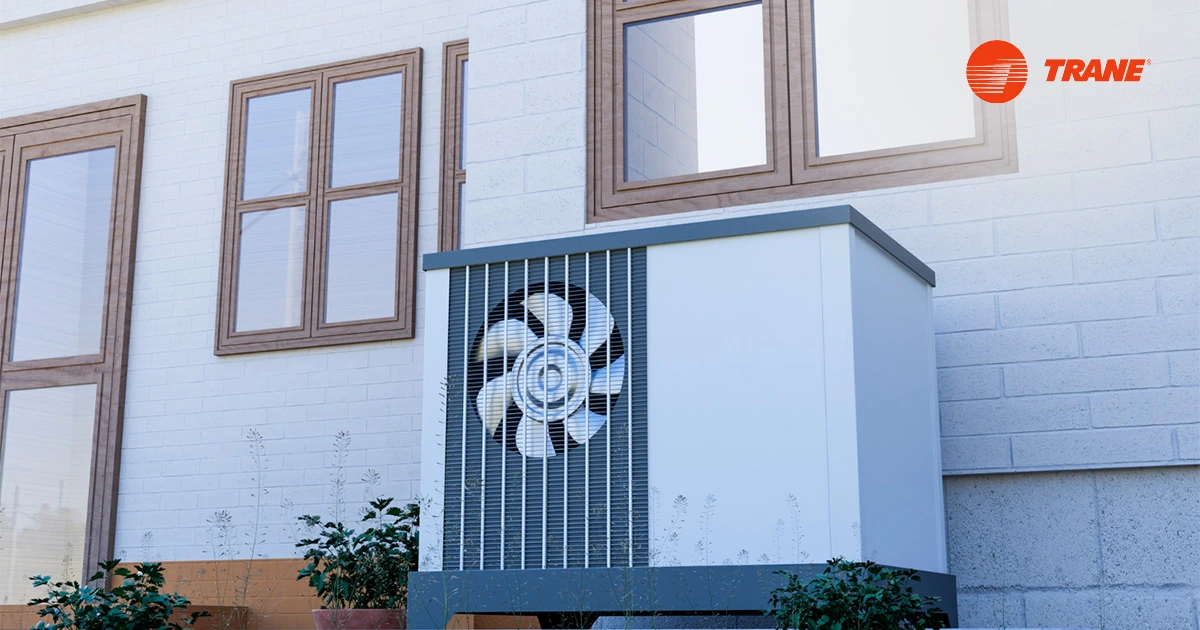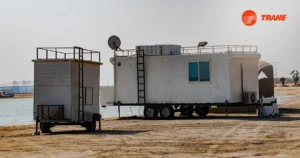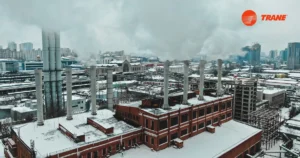The Growing Need for Smarter Cooling Solutions
Imagine a bustling commercial district or a cluster of residential towers. Traditionally, each building manages its own cooling needs, often with stand-alone chillers and HVAC units. This approach leads to duplicated infrastructure, inconsistent comfort levels, and soaring energy bills — problems Saudi Arabia’s expanding cities cannot afford.
District Cooling: The Smart Solution for Saudi Cities
District cooling systems centralize the production of chilled water at a single plant, then distribute it via insulated pipelines to connected buildings. This design leverages large-scale, highly efficient air cooled chillers to lower energy consumption and emissions dramatically.
Trane’s district cooling solutions offer:
- Economies of Scale: By consolidating cooling production, you gain operational efficiencies impossible with individual systems.
- Scalability and Flexibility: Systems can grow alongside urban developments, easily adapting to fluctuating demand.
- Reduced Environmental Impact: According to the International Energy Agency (IEA), district cooling can reduce cooling energy use by up to 50% compared to conventional systems — a vital contribution to Saudi Arabia’s climate goals.
- Enhanced Comfort and Reliability: Centralized maintenance and control mean fewer system failures and more consistent temperatures for occupants.
Real Impact: From Vision to Reality
Saudi Arabia’s Vision 2030 emphasizes sustainability and smart city initiatives. District cooling is at the heart of this vision, enabling cooler, greener urban spaces while cutting infrastructure costs. Developments in Riyadh and NEOM have already integrated district cooling, showcasing its transformative potential.
Common Questions About District Cooling
Q: Can existing buildings connect to district cooling?
A: Yes. Trane engineers customize interfaces allowing smooth integration with current HVAC systems.
Q: What is the typical payback period?
A: Savings on energy and maintenance usually result in a payback period of 5-7 years depending on scale and use.
Q: How does district cooling impact energy grid loads?
A: By shifting cooling load to off-peak hours and centralizing equipment, district cooling eases grid strain during peak demand.
How District Cooling Delivers Real Energy Savings in Saudi Arabia
Saudi Arabia faces unique cooling challenges due to its extreme climate and rapid urban expansion. Efficient cooling is essential not only to ensure occupant comfort but also to manage soaring energy costs and environmental impact.
According to a detailed report by Strategy&, part of the PwC network, district cooling systems in the Middle East—including Saudi Arabia—typically use 40 to 50 percent less energy per refrigeration ton-hour compared to conventional, individual building cooling solutions. This significant energy saving is due to centralized equipment, advanced technology, and economies of scale achieved by serving multiple buildings from one cooling plant.
This efficiency is particularly critical for Saudi Arabia’s sustainability goals and Vision 2030, which prioritize reducing energy consumption and carbon emissions in urban infrastructure. By adopting district cooling, Saudi cities can balance rapid growth with environmental responsibility, lowering operational costs while providing superior comfort.
For more detailed insights on district cooling potential in the region, you can explore the full Strategy& report here: Unlocking the Potential of District Cooling in the Middle East
Conclusion: Embrace District Cooling to Cool Saudi Arabia’s Urban Growth
As Saudi Arabia’s cities expand, embracing district cooling systems offers an efficient, eco-friendly path to sustainable urban comfort. With Trane’s expertise and advanced comfort cooling technologies, developers and facility managers can meet rising cooling demands reliably while reducing costs and emissions.Discover how Trane’s scalable cooling rental solutions can support your next urban development project. Contact us today.




